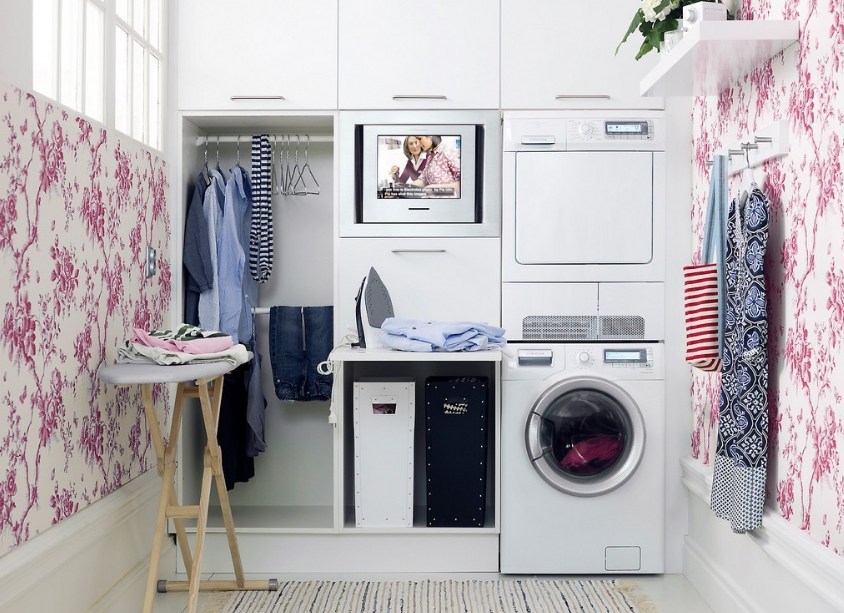Washer hoses may not be on your list of regular home maintenance projects, but they are an important maintenance item that you should not neglect, especially if your washer does not have a flood guard feature. Defective or aging washing machine hoses are the most frequent cause of water damage in homes.
Thank you for reading this post, don't forget to subscribe!This guide will tell you all you need to know about washing machine hoses—from the variety of types to (safely) replacing them, spotting the flaws that make them age, and how to keep them in good working condition for as long as possible, so you can stop worrying about leaks when washing your clothes.
Types of Washer Hoses
Not all washing machine hoses are made equal. They can be of use to you as well, so you can choose one that fits your needs as well as one that is durable. Here’s a breakdown:
Rubber Hoses
Washer hoses come in rubber, which is the most common type of hose. They are inexpensive and easy to find, but may not be the most long-lasting. Rubber hoses can age and crack from normal wear and heat and pressure, causing holes or leaks.
Pros:
- Affordable
- Widely available
Cons:
- Prone to deterioration
- Not as long lasting as some other models
Stainless Steel Braided Hoses
Better still are braided hoses of stainless steel. They have a stainless steel outer and a stainless steel inner with a PTFE tube inner cover that stands up to corrosive materials such as acids.
Pros:
- Highly durable
- Not prone to punctures and wear
Cons:
- More costlier than rubber pipes
- Still no utomatic routine testing
Burst-Proof Hoses
The hoses are completely burst-proof to ensure it lasts a lifetime. These hoses have a layer of extra reinforcement for pressure resistance.
Pros:
- Excellent durability
- Best for pressure systems
Cons:
- Higher cost
- Could be overkill on standard systems
How to Inspect Washer Hoses
You should regularly check your washer hoses as part of your simple home maintenance routine. Here’s how to check them properly:
1. Check for Cracks or Bulges
Examine the full length of the hose for any visible signs of cracking, bulging or signs of wear. These are indications that the hose is reaching the end of its life.
2. Look for Corrosion
If you are using metal fittings, see if you can spot any corrosion or rust, which can undermine the connection points.
3. Ensure Secure Connections
Ensure there is a good connection at the water supply and to the back of the washer. Less than tight connections can result in leaks.
4. Test for Flexibility
Gently bend the hose. If it’s stiff, brittle, or inflexible, its time to replace it.
5. Inspect Every Six Months
Put it on your calendar to check your hoses twice a year so you catch any potential issues before they become expensive problems.

How to Replace Washing Machine Hoses in 8 easy steps
Changing out washer hoses is a simple task that you can do yourself. For a trouble-free replacement, here are some easy things to do:
Materials Needed:
New washer supply lines (stainless steel braided lines are the best, but not the cheapest)
- Adjustable wrench
- Bucket or towel
- Teflon tape (optional)
Steps:
- Turn Off Water Supply
Find the water valves behind your washing machine and completely shut them down.
- Drain the Hoses
Set a bucket or towel underneath the hoses to catch any water. Unhook one end of the hose from the back of the washer so you can get the water dump into that bucket.
- Remove the Old Hoses
Carefully unscrew the opposite end of the hose from the water source with an adjustable wrench. Do the same to the other fitting; take care not to ruin the fittings.
- Prepare the New Hoses
Remove the replacement hoses from packaging and visually check for any obvious damage. If the fittings are metal, you can wrap them in Teflon tape for a tight, leak-free connection.
- Attach the New Hoses
Screw the threads to the water supply and the washing machine. Just screw them in by hand and give them another quarter turn using the wrench. Do not over-tighten it can ruin the fittings.
- Test for Leaks
Turn back on the water supply and do a short wash to check for leaks. Bring any dripping connections to a stop by tightening them just a bit.
- Position the Hoses
Be sure the hoses are not kinked, and not pushed up too tightly against the wall, to wear out over time.
How to keep Washer Water Hoses from bursting.
With the right care, your washer hoses can last longer, and you never have to worry about unexpected leaks. Here are a few tips to help you keep your washer hoses in top condition:
- Replace Every 3 to 5 Years
It’s a good idea to replace your hoses every 3 to 5 years, even if they look good.
- Use a Hose Sleeve or Guard
In situations where the hoses may be exposed to sharp edges, or have the potential to come into contact with an abrasive rubbing surface, a hose sleeve or guard can also prolong the life of your hoses.
- Install a Leak Detector
Purchase a leak detection tool that can notify you of potential leaks before they become a disaster.
- Upgrade to Burst-Proof Hoses
If you have high water pressure in your home, burst-proof hoses can add an extra level of security.
- Secure Connections
The hoses connections should be examined and tightened every now and again.
How to Keep Your Laundry Room Leak Free
Washer hoses may seem like a small item, but having a good set can keep your laundry room from disaster. By knowing the kinds of hoses you can purchase, checking them on a regular basis, and knowing when to replace old hoses, you can keep leaks from happening, save money on repairs, and allow your washing machine to last longer.
Take a look at your washer hoses, and take action now. Don’t wait if you see any evidence of wear or damage. Replace these today and ensure your laundry room is fully operational.
Have question or need help choosing the best washer hose for you? Just drop a comment and we will help you!



